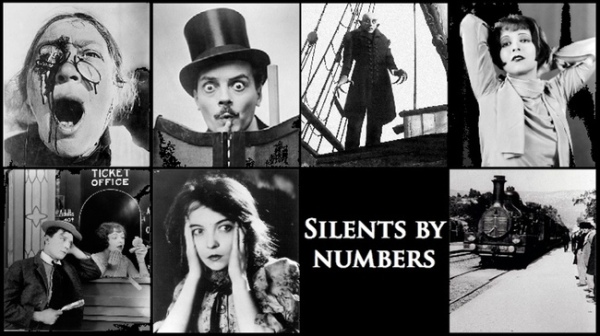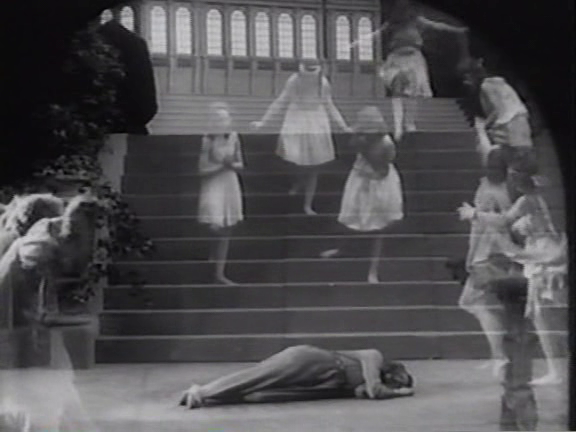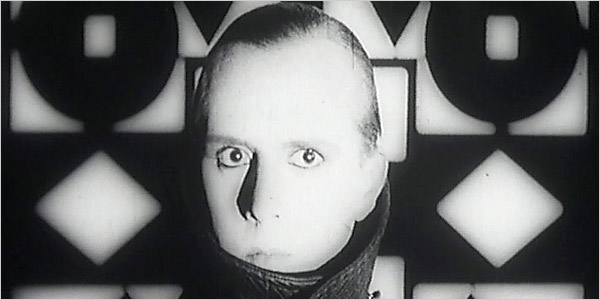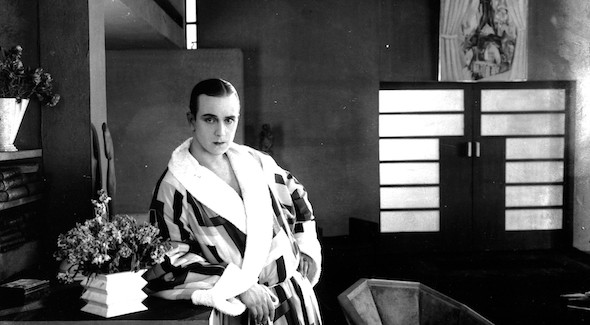Pordenone changes a person. I don’t just mean in the way that my bloodstream is now 80% espresso. It changes your aspirations. My dream now is to live in an apartment designed by Sonia Delaunay, watching Peter Elfelt’s dance films (they are playing before several of the screenings) all day. For loungewear, I would choose the louche shawl-collared robe sported by Jaque Catelain in Le Vertige, and if I ever left the flat, I would wear the stunning geometric coat and hat sported by Madame Gilberte in Le P’tit Parigot. I’d take the vintage Bugatti too, please.
Continue reading Le Giornate del Cinema Muto 2023: Pordenone Post No 5Tag Archives: Marcel L’Herbier
Brigitte Helm: the perils of hedonism
There is no face more closely associated with the grandeur of Weimar Cinema than that of Brigitte Helm. Her first appearance on film was in the iconic dual-role of the teacher and the robot in Fritz Lang’s Metropolis (1927). As the villainous clone, her frenzied dancing and her kohl-rimmed eyes in winking close-ups incarnated a particularly timely force of evil: the giddy whirl of decadent 1920s Berlin. This was a time, according to German politician Gustav Stresemann, in which the people of Germany, intoxicated by the possibilities of the post-war world, were dancing on a volcano. Danger was afoot. In Metropolis, Helm’s crooked finger lured the hapless citizens to the brink. And audiences followed.

L’Inhumaine (Marcel L’Herbier, 1924) Blu-ray review: the high art of cinema
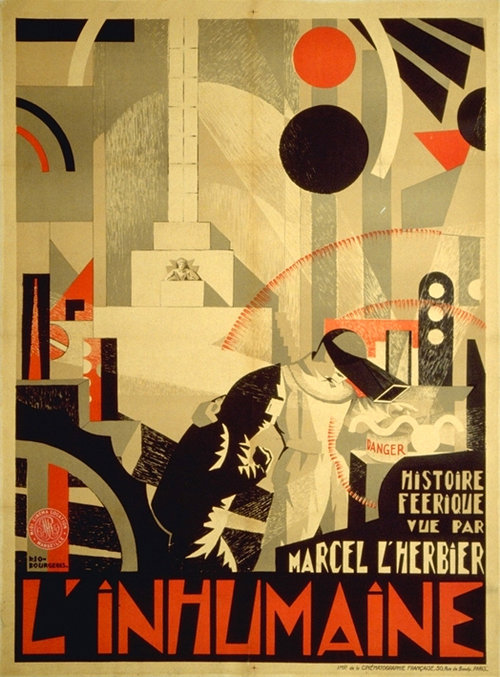
In the silent era, films were far more ephemeral than they are today. The fragile nitrate was unspooled for a few shows in each cinema that rented them, and then sent away, re-used, melted, left to crumble and decay or burst, suddenly, into flames. It was a time before retrospectives and archives and museums of the moving image. Now we see films in very different way. In the digital world, although the films seem to have lost their physical presence, becoming data streamed or downloaded on to screens of all sizes, they have the illusion of permanence. Central to this is the arthouse home video market, which packages films like books, as objects to be cherished, or maybe hoarded. A shelf full of gleaming Criterion Blu-rays is as imposing as a line of leather-bound novels – talismans of high culture and prized possessions. We don’t just watch films now, we expect to own them: explore them rewind and freeze and read around them.
Marcel L’Herbier’s Art Deco science-fiction drama L’Inhumaine is as much an art object as a film, and as such, it is the perfect Blu-ray movie. This glittering feature was designed to be admired from all angeles, its intricate and self-consciously beautiful design is the 1920s equivalent of 4K high-definition. I dare you to watch it without your finger itching for the pause button.

The inhuman woman of the title is a lady who knows a thing or two about being admired from all angles. Claire (played by soprano Georgette Leblanc) is an opera singer who lives in a stunning modernist home, which she opens to a select group of guests, a fawning salon of important men who jostle for her attentions. Everything about Claire’s world is both chilly and extravagant. The dinners she hosts are served at a dining table surrounded by an indoor moat. A drift of swans putter around the guest, more of Claire’s captives, but the only ones present who are indifferent to her beauty. When Claire hears that one of her admirers, Einar (Jaque Catelain) has killed himself after she rejected him, she experiences a slow awakening of her passions, and a more literal resurrection of her body, via a poisonous snake and an electric re-animation machine.
Continue reading L’Inhumaine (Marcel L’Herbier, 1924) Blu-ray review: the high art of cinema
The top 10 silent film dream sequences
This is a guest post for Silent London by Paul Joyce, who blogs about silent and classic cinema at Ithankyouarthur.blogspot.co.uk. The Silents by Numbers strand celebrates some very personal top 10s by silent film enthusiasts and experts.
Cinematic dreams are a staple of the silent era more than any other, possibly because much of what was on screen had only previously been experienced in dreams for contemporary audiences. Now our dreams are founded on over a century of cinema and we’re so much harder to impress but … we can still dream on. Here’s a top ten of silent dreams with a couple of runners up as a bonus.
The Astronomer’s Dream (1898)
A madly inventive three minutes from George Méliès in which an old astronomer is bothered by a hungry moon as the object of his observation makes a rude appearance in order to eat his telescope.
Dream of a Rarebit Fiend (1906)
A feast of special effects in Edwin S Porter’s cautionary tale on the matter of over-indulging in beer and cheese. Jack Brawn plays the titular fiend who suffers all manner of indignities once he staggers home to his bed, whereupon his sleep is interrupted by rarebit imps and his bed flies him high into the night sky … Proof that the whole cheese-and-dreams rumour is actually true.
Atlantis (1913)
In August Blom’s classic – the first Danish feature film – Olaf Fønss’ doctor dreams of walking through the sunken city of Atlantis with his dead friend, as the passenger ship he is on begins to sink. It’s either a premonition or recognition that his true feelings have been submerged … JG Ballard was obviously later inspired to write The Drowned World.
Poor Little Rich Girl (1917)
After being accidentally overdosed with sleeping draught by careless servants, Mary Pickford’s character falls into a deep and dangerous sleep … As she hovers on the edge of oblivion the story runs parallel between the doctor trying to save her and her dreams in which those she knows are transformed in her Oz-like reverie. Sirector Maurice Tourneur excels as “the hopes of dreamland lure the little soul from the Shadows of Death to the Joys of Life”.

When the Clouds Roll By (1919)
Douglas Fairbanks is harassed by vengeful vegetables after being force-fed too many in an effort to drive him to suicide (yep, it’s a comedy). Directed by Victor Fleming, who later returned to dreams with Dorothy and that Wizard.
Continue reading The top 10 silent film dream sequences
Fashion in Film Festival – Marcel L’Herbier
The Fashion in Film Festival is a movable feast, but one we can always rely on for some wonderful silent film screenings. This year’s event has just begun, and the focus of the festival is the French director Marcel L’Herbier, who worked in both the silent and sound eras, creating captivating, elegant and strange films of staggering beauty. This is what the festival has to say about his silent films:
During the silent period, L’Herbier’s ambition for the cinema was to create a Gesamtkunstwerk, a cinéma totalwhich would synthesise all the arts and draw together architects, artists, set designers, couturiers and costume designers. Among the many major cultural figures he collaborated with were the artists Fernand Léger, Sonia and Robert Delaunay, the composers Darius Milhaud and Arthur Honegger, the architect Robert Mallet-Stevens, designers Alberto Cavalcanti and Claude Autant-Lara, and couturiers Paul Poiret, Lucien Lelong (L’Herbier’s cousin) and Louiseboulanger. Paired with his multi-disciplinary collaborative approach, it was L’Herbier’s desire to legitimise and ennoble cinema as the ‘seventh art’ that helped establish him as a seminal figure within Paris’s vibrant cultural milieu of the inter-war years.
Using art, fashion and design as the prisms through which to examine L’Herbier’s diverse body of work, Fashion in Film’s season highlights his lifelong interest in cinematic style and aesthetics. As the costume designer Jacques Manuel once observed, costume for L’Herbier was so often a way of ‘feeding’ the ‘mechanical eye’ with evocative surfaces and textures, a way of testing the formal elements of cinema itself such as movement, rhythm, light and shadow.
To feed your own eyes, and for a direct lesson in the importance of costume design to L’Herbier’s total vision of cinematic photogénie, watch the festival’s slinky trailer here.
A true multi-disciplinarian, L’Herbier arrived at film-making after considering literature and music as possible careers, and more prosaically, having worked in a uniform factory during the first world war. When Feuillade’s leading lady Musidora took L’Herbier to see Cecil B DeMille’s melodrama The Cheat, he realised the potential of cinema, and starting out in the army’s cinematographic unit, began to learn the art of film-making. However unlikely a start this may seem, even his very first film, a propaganda piece called Rose-France, was ambitiously experimental.
At first, L’Herbier worked for Gaumont, but his artistic dreams soon clashed with the realities of their budgets, and in 1923 he formed his own company, Cinégraphic. You may be familiar with L’Herbier’s silents already, particularly Zola adaptation L’Argent, which is available on DVD from Masters of Cinema. The Fashion in Film Festival is showing L’Argent, as well as sci-fi opera L’Inhumaine (The Inhuman Woman) and doppelganger drama Le Vertige (The Living Image). You can read the full programme of events here. Not showing at the festival, but recently released on Blu-Ray by Flicker Alley in the US, is the Pirandello adaptation Feu Mathias Pascal.
To read more about L’Herbier, and the films showing in the Fashion in Film Festival 2013, read Samuel Wigley’s piece on the BFI website, which includes a sumptuous picture gallery. Also, in this month’s issue of Sight & Sound magazine, David Cairns offers an excellent study of the films showing at the festival and a director he describes as “commingling High Seriousness and High Camp in an ecstatic personal vision”. Now, don’t you want to see what that looks like?
Read more and book tickets, here on the Fashion in Film Festival website. The festival runs from 10-19 May.


